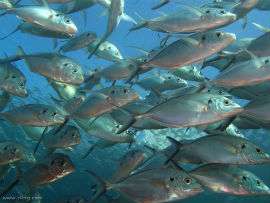Conservation theory gets mathematical treatment

Theories used for the last four decades as a tool to guide the conservation of flora and fauna may have misinterpreted the biological reality, according to new research by mathematicians at the University of York.
Interactions among species are central to the concept of an ecosystem but theoretical descriptions of these complex systems developed 40 years ago assumed interactions among species were completely random.
Researchers in the Department of Mathematics at York working with mathematicians at the University of Canterbury in Christchurch New Zealand have used a combination of ecological data and mathematics to show that the established theories of complex systems in nature are inaccurate by several orders of magnitude.
The research team led by Dr Alex James and Dr Mike Plank at Canterbury and Dr Jon Pitchford at York,, found that interactions among species in nature were far more stable than theoretically predicted.
The research which is published in the American Naturalist also involved scientists at Queens University, Belfast, and the UK Centre for Environment, Fisheries and Aquaculture Science (Cefas).
The study used data on species interactions in 21 ecological systems including terrestrial and aquatic food webs and marine ecosystems revealed remarkably similar results.
Dr Jon Pitchford, who led the research at York, said: "Essentially what we did was use applied maths to review how well 40 years' worth of theory fitted with data about interactions among species. We discovered some consistent patterns in the networks of interaction.
"Although there is a relationship between stability and complexity in ecological communities, the predictive power of that relationship is weak. Our study shows that we can't rely on random numbers as a substitute for ignorance. We must be cautious in drawing conclusions about ecosystems' stability without data on network structure or interactions among species."
Co-author Axel Rossberg of Cefas, added: "Simulated food webs are being used increasingly in helping to decide on questions in fisheries management. Our results show how to do this more reliably."
More information: "Constructing Random Matrices to Represent Real Ecosystems" The American Naturalist www.jstor.org/stable/10.1086/680496
Journal information: American Naturalist
Provided by University of York
















